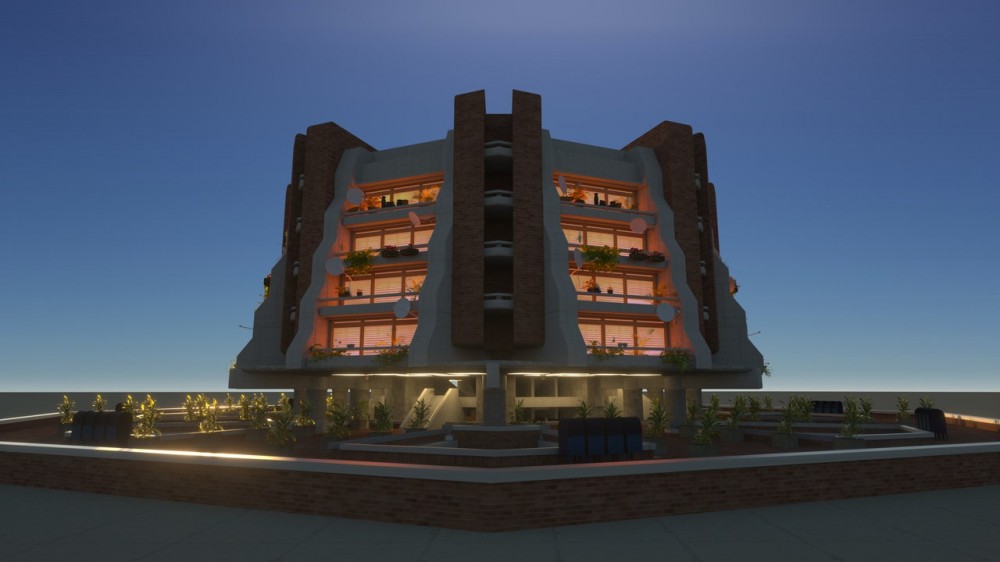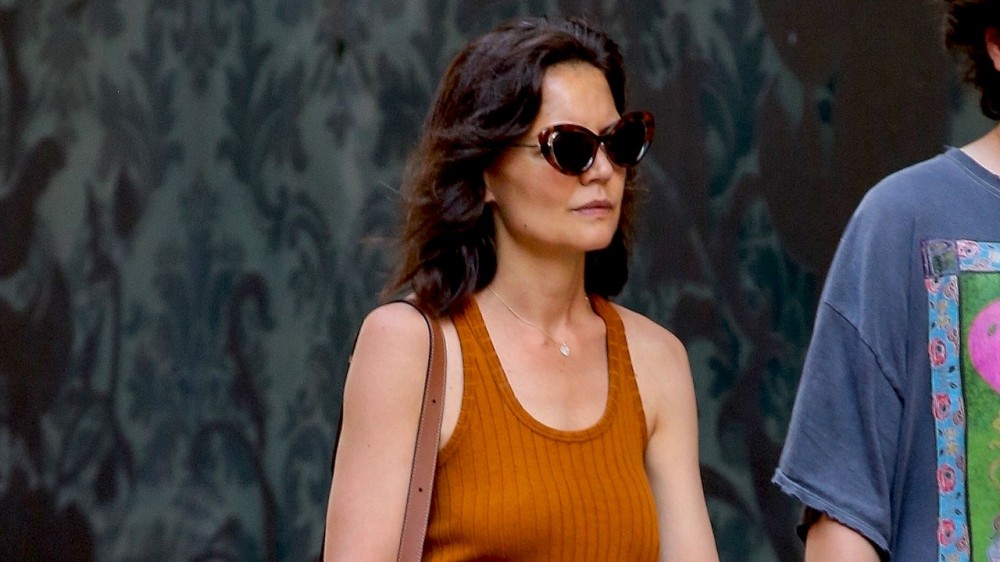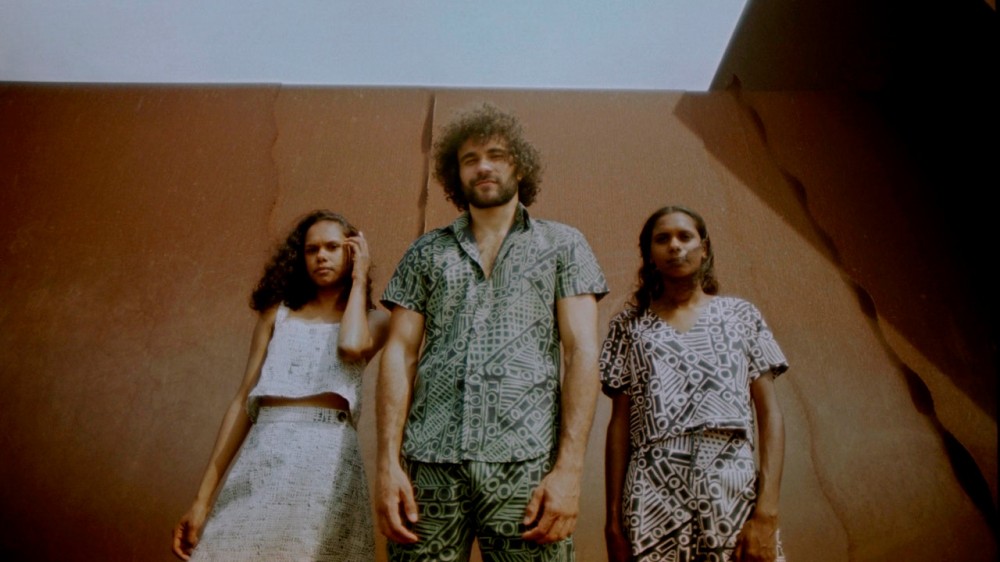
Martine Rose Embraces Virtual Voyeurism With a Window Into People’s Homes—Drake’s Included
Martine Rose kindly invites us to drop in on 24 people’s homes all over the world today. It has to be today, or you’ll miss it. Because this is Rose’s first digital one-off show, via her website: the equivalent of the gathering-together feeling she’s always sought to evoke with her physical shows. “I wanted it to be [that] you were there,” she says, “or you weren’t.”
Martine Rose worked with International Magic to create a virtual reality high-rise, inside of which the superstar Drake and many others show off her spring 2021 collection. Photo: Courtesy of Martine Rose
You’ll be in for a roam-around in what looks like a high-rise block of flats, directed by the designer and rendered by International Magic, a British “Experience Design studio” she met through friends before the first lockdown of 2020. At first it looks like a drab, gray, computer-game thing, but then each door opens onto a separate film self-recorded by multigenerational people in their homes—in Jamaica, Canada, Paris, Palestine, Kenya, Japan, L.A., New York, Korea, Russia, and Mexico—on their iPhone 12 Pro cameras. If you can imagine opening a sort of advent calendar, and discovering lovely people doing their ordinary stuff in isolation behind each window, it’s that kind of sensation: the uplifting, human, inclusive niceness which is the reward you get from trekking off the beaten fashion track to be at Rose’s physical shows. And one of the families who rigged up a tripod in their front room is her own, in London.
“Part of the experience of coming to my shows is the atmosphere of community, of people coming together—it’s not just the clothes” she says. “That was a big conversation, because I’m not a very digital person. My concern was how can you capture those things you can’t really put into words? Can you still get the warmth? I’m always interested in the cracks, the imperfections, the authenticity.”
There are indeed clothes—belonging to the collection that she launched for spring 2021 (which are available imminently) with a look book, also shot remotely, with the eye-boggling cooperation of webcam boys—a whole other sociological current affairs story. This time, in the “ What We Do All Day” rendering, we’re visiting Mayra and Alfredo Nakatani, an enchanting elderly couple being silly in their front room in Mexico City; a kid playing a computer game in Ramallah who gets leapt on by his parents, so they can have a go too; Urara Tsuchiya in Tokyo who’s mad about English florals and lives with her child and mother; the reggae DJ legend Big Youth keeping it going at home in Kingston; and, yes, the superstar Drake isolating in Canada. Among many more.
Drake, at home in Canada. Photo: Courtesy of Martine Rose
Rose was aiming for everyone, famous or not, to capture their ordinariness. “We didn’t want people to feel directed or self-aware. Some were very aware of performing for the camera. Some were really good at pretending the camera wasn’t there,” she says. The shooting, going into people’s homes via Zoom, was necessarily a collaborative process, and better, she thought, the less they tried to script it. “Because, if we’ve learnt anything in the past year,” she shrugs, “it’s that we can’t control things that much. We wanted people’s personalities to come out; we were really interested in who people were.”
That’s a very Rose-ish way of looking at things. What’s always made her physical shows exceptional—like the last time, when she took everyone to sit in her daughter’s primary school, or before that, to a neighborhood-covered market, or to show in a street in Islington when families sat in their gardens to watch that everyone still talks about—is that she ignores the existence of fashion’s fourth wall. Her venues aren’t “conceptual,” or archly-contrived excursions to keep blasé fashion people amused; you’re meant to be where you are. “Shows are all about the experience for me. I was always interested in pulling people together, and what space you put people in. Mixing people.”
Violet and Ylow. Photo: Courtesy of Martine Rose
Photo: Courtesy of Martine RoseTalvi. Photo: Courtesy of Martine Rose
Photo: Courtesy of Martine RoseIn fact, this experiment—the challenge of how to make something feel human, onscreen—didn’t start with the pandemic; though when it rolled in, the whole idea took on a sharply poignant relevance. Weeks before lockdown, Rose had been speculating with the International Magic tech guys about the future of fashion shows. “I was really coming at it from a sustainability angle. Asking would shows still be about shipping people across the world—thousands of people flying across the world to see huge, expensive shows with massive set-ups? And could there be space for digital shows that don’t feel hollow and empty? Then suddenly what we were talking about became the everyday reality. It really became social commentary, and we were reflecting everyone’s experience as it was happening.”
Is it soppy to say that it’s heartwarming? In these days, when cynicism and divisiveness is way beyond the pale, surely it’s an almost noble feeling to have aimed at. “People are feeling so lonely, separated, and desperate at the moment. We definitely wanted people to leave the experience feeling a sense of togetherness. Almost, the clothes were secondary to me. More, it’s commenting on this shared experience of being isolated. Being alone, together. It’s a big thing. People are so wonderful, that’s the thing. Seeing that we’re all the same.”
Max and Maria. Photo: Courtesy of Martine Rose
Photo: Courtesy of Martine RoseElsa Majimbo. Photo: Courtesy of Martine Rose
Photo: Courtesy of Martine RoseMohamed, Alyssa, and Khaled. Photo: Courtesy of Martine Rose
Photo: Courtesy of Martine RoseChristopher. Photo: Courtesy of Martine Rose
Photo: Courtesy of Martine Rose


